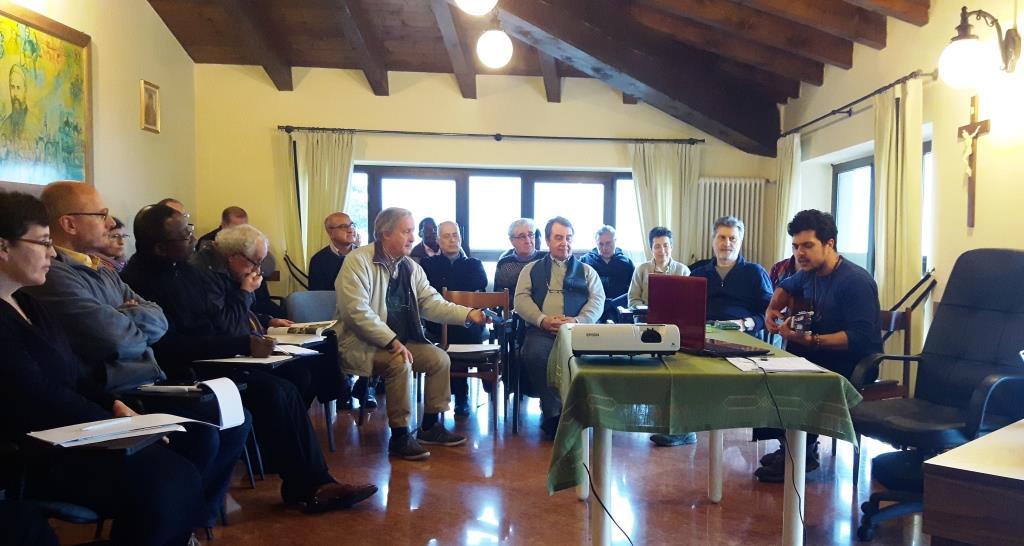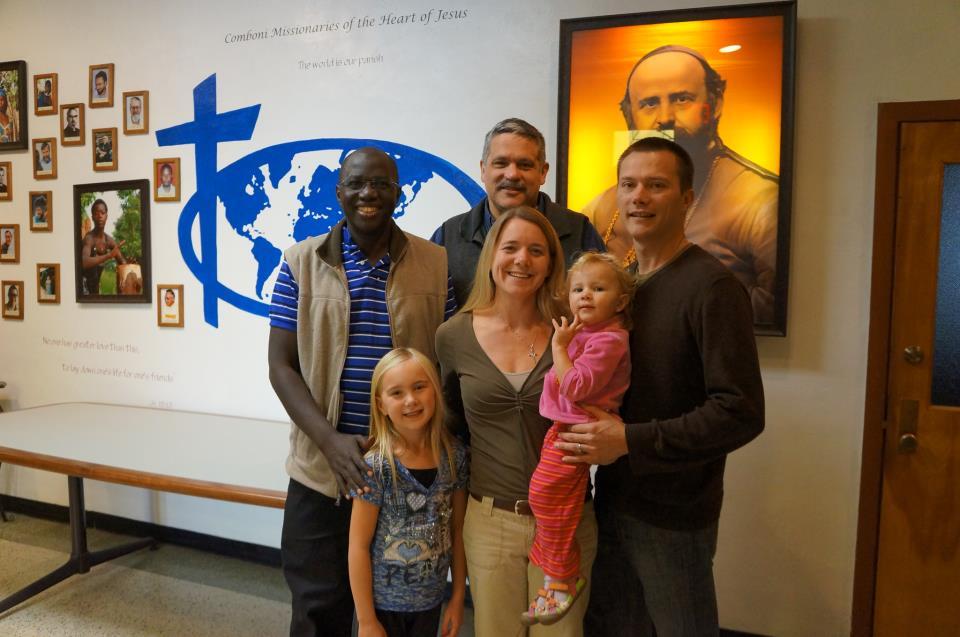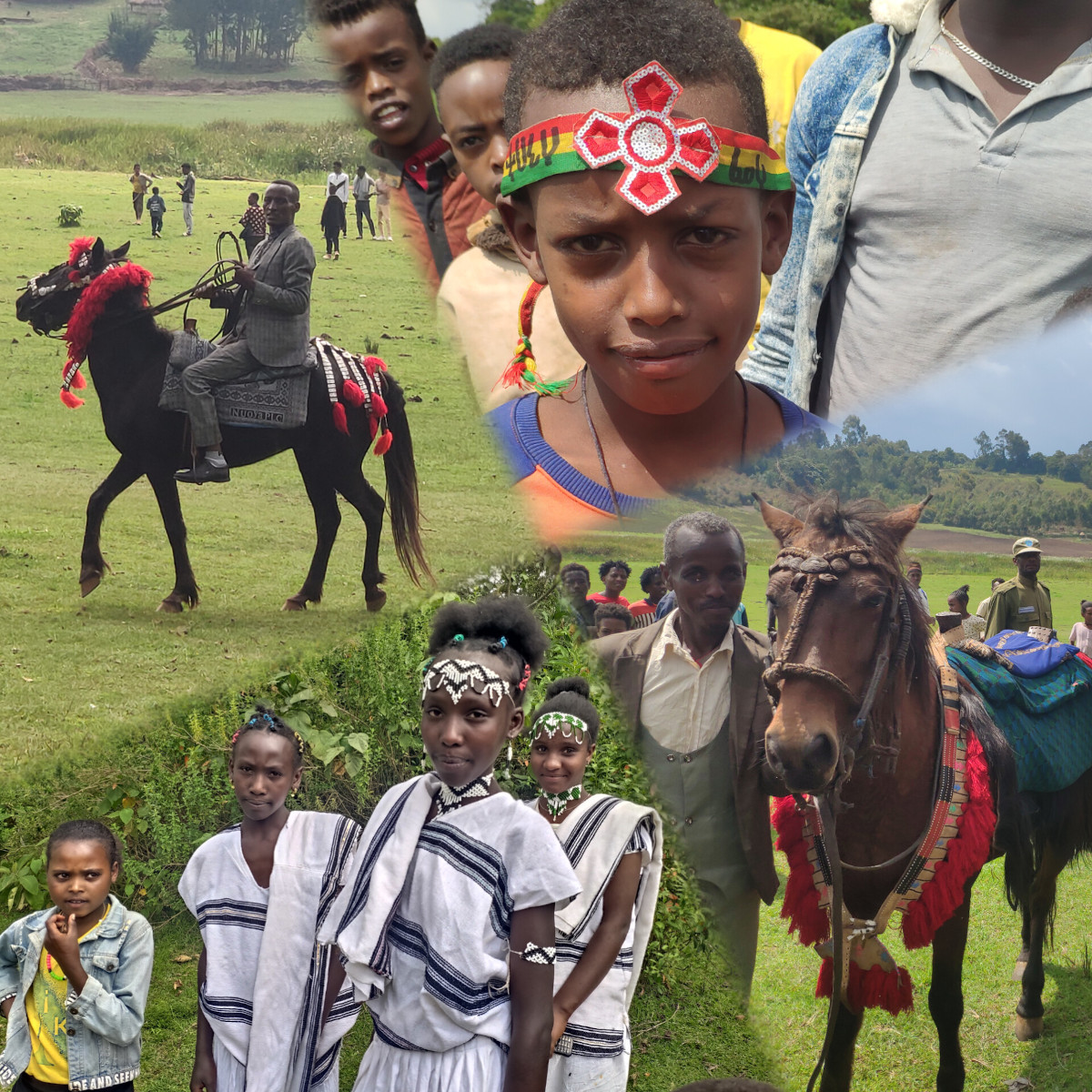Daniel Comboni
Comboni Missionaries
Institutional area
Other links
Newsletter
Monday, September 30, 2024
Today we celebrate here Meskel, the finding of the true Cross of Jesus. The celebration of መስቀል Meskel (The Cross), referring to the finding of the true cross where Jesus Christ was crucified, is one of the major Ethiopian Orthodox festivals that is celebrated for two days mostly in the center and northern part of the country.
27th September 2024
In the Ethiopian tradition, there is the Legend that in the year 326, queen Helen, the mother of the roman emperor Constantine the Great, who had become a Christian herself, desired to discover the cross upon which Christ was crucified. For that purpose, she made a trip to Jerusalem and asked all the religious leaders in the area to help her find it, but they were not able to guide her.
Sad and crying, queen Helen knelt in prayer and asked God to help her because she had good intentions in finding it: to give honor to this particular means for which salvation had come to humanity. After a prolonged period of prayer in silence, as the legend continues saying, an angel instructed her to take some dried branches, start a burning fire and to follow the direction of the smoke until it would get down. “There, where the smoke will touch the ground”, the angel told her, “You will find the place where the true cross of Christ has been buried. After unearthing the Holy Cross, queen Helen, full of joy lit torches announcing her finding.
It is from this this event that Ethiopians imitate the actions of queen Helen, putting the ደመራ ‘demera’, dried branches tied together in form of a cone in front of their houses and in the main square of their towns, to light them after giving thanks to God for the finding of the cross.
After its finding, the cross was cut in different pieces and given to each one of the main churches of the Christian world in that time; one of them was the church of Alexandria in Egypt that was also in close communion with the church of Ethiopia.
How did the piece of the Cross of Christ arrive in Ethiopia? There are two versions:
1. The first account indicates it was sent as a gift by the ‘King of the Franks’ (a region around Germany) in the time of Emperor Zera Yakob (1434-1467) and that it was contained in a golden box, which was, in turn, inside another golden box with the shape of a cross.
2. The second account, quite different, reveals that the Muslim rulers were continually persecuting the Christians of Egypt and they asked help from the Ethiopian emperor Dawit II (1508 to 1540) who immediately threatened the Egyptian authorities with cutting off the waters of the Nile. Scared, they ended persecution and sent the piece of the cross to appease the Ethiopians. Other sources reveal, however, that it was the patriarch of Alexandria himself who sent the fragment of the cross in thanksgiving for the effective intervention. Allegedly, that fragment is held up in the church of Gishen Mariam, a place about 70 kilometers northwest of the town of Dessie.
Meskel’s celebration is marked with feasting, dancing, and lively religious processions. The program starts on the eve with the ‘demera’, the cone-shaped that is set ablaze by the procession guided by the orthodox priests (often also accompanied by other religious and political leaders.) Then, the people toss flaming torches or candles which they are carrying, singing special Meskel songs as they circle it.
The "Demera" burns until the central branch (the tallest and stronger) collapses, turning the branches into ashes. Once the main branch falls to the ground, the young boys and girls run, rushing towards the fallen branches, either to tip with their fingers ashes and mark the sign of the cross on their front head or to take a part of the wood made already charcoal to take home and suggest their members to do the same, to mark their front heads with a cross. The next day, some of the Christians who didn’t go for the burning of ‘demera’, go to the celebration’s place to take ashes and also draw the cross on their front heads. After that, all the members of the family get together at home to have a well-prepared lunch that will include meat prepared in different delicious ways to celebrate Meskel (+).
There is no doubt that the veneration of the holy cross is one of the most salient features of Ethiopian spirituality. They express that devotion by making crosses of all kinds forms, shapes, materials, and sizes. Everybody can see people on the streets carrying them with them, posting them on buildings and churches, or even using them as tattoos on the front head. It is said that Ethiopian emperor Zara Yakob imposed the practice of tattoos, so that Christians could give witness of their faith, distinguishing themselves from Muslims.
In the Christian orthodox tradition, the cross is carried without the figure of the crucified on it since it indicates the victory of Christ, hence his suffering passes into the background, showing a cross where Christ is not there because he is already risen. However, it indicates that the place where he showed the biggest sign of his love for all humanity was the cross, where he died for all of us.
May God bless all Ethiopians and Christians who carry a መስቀል Meskel with them, showing Jesus’ love.
Happy feast of the Cross!





